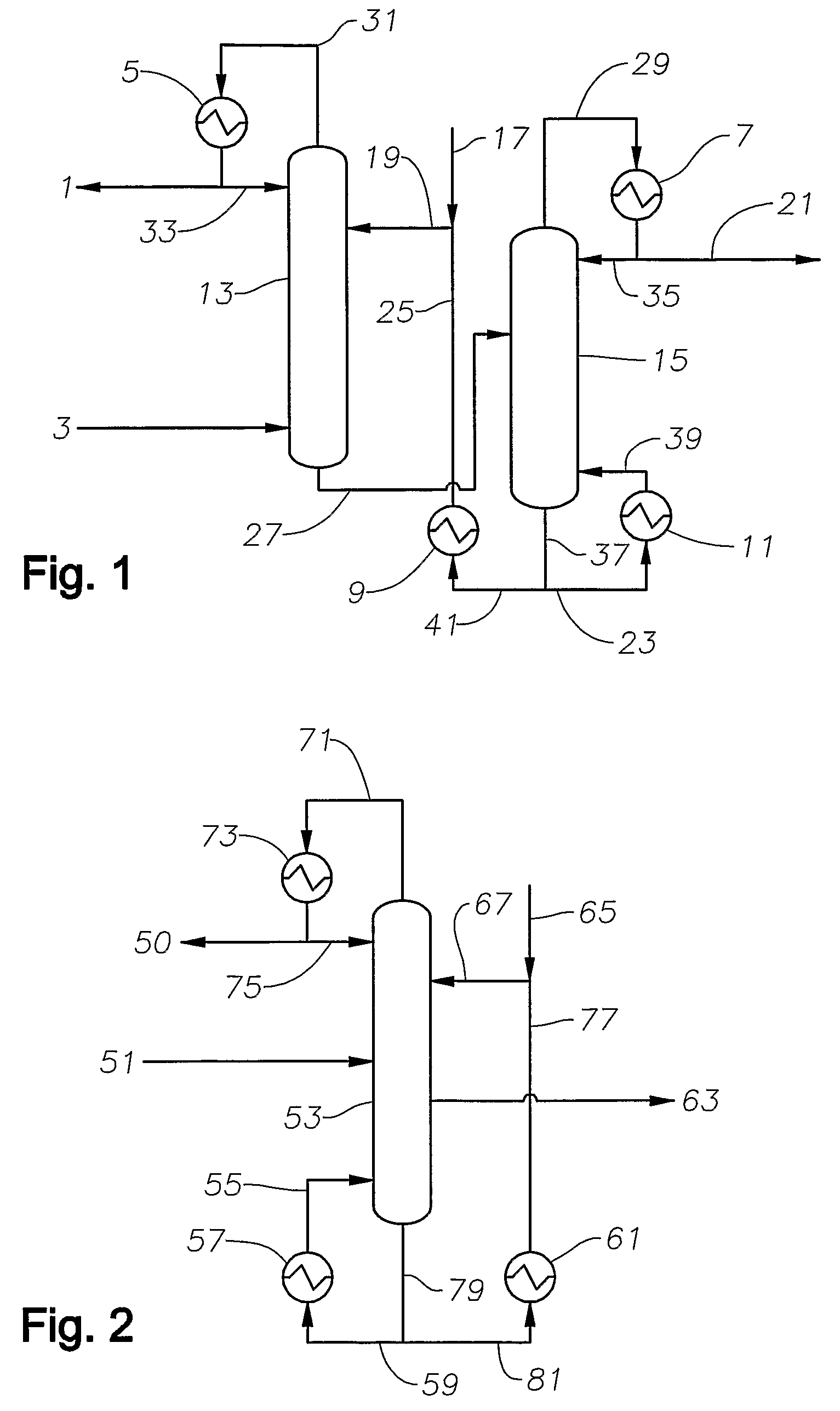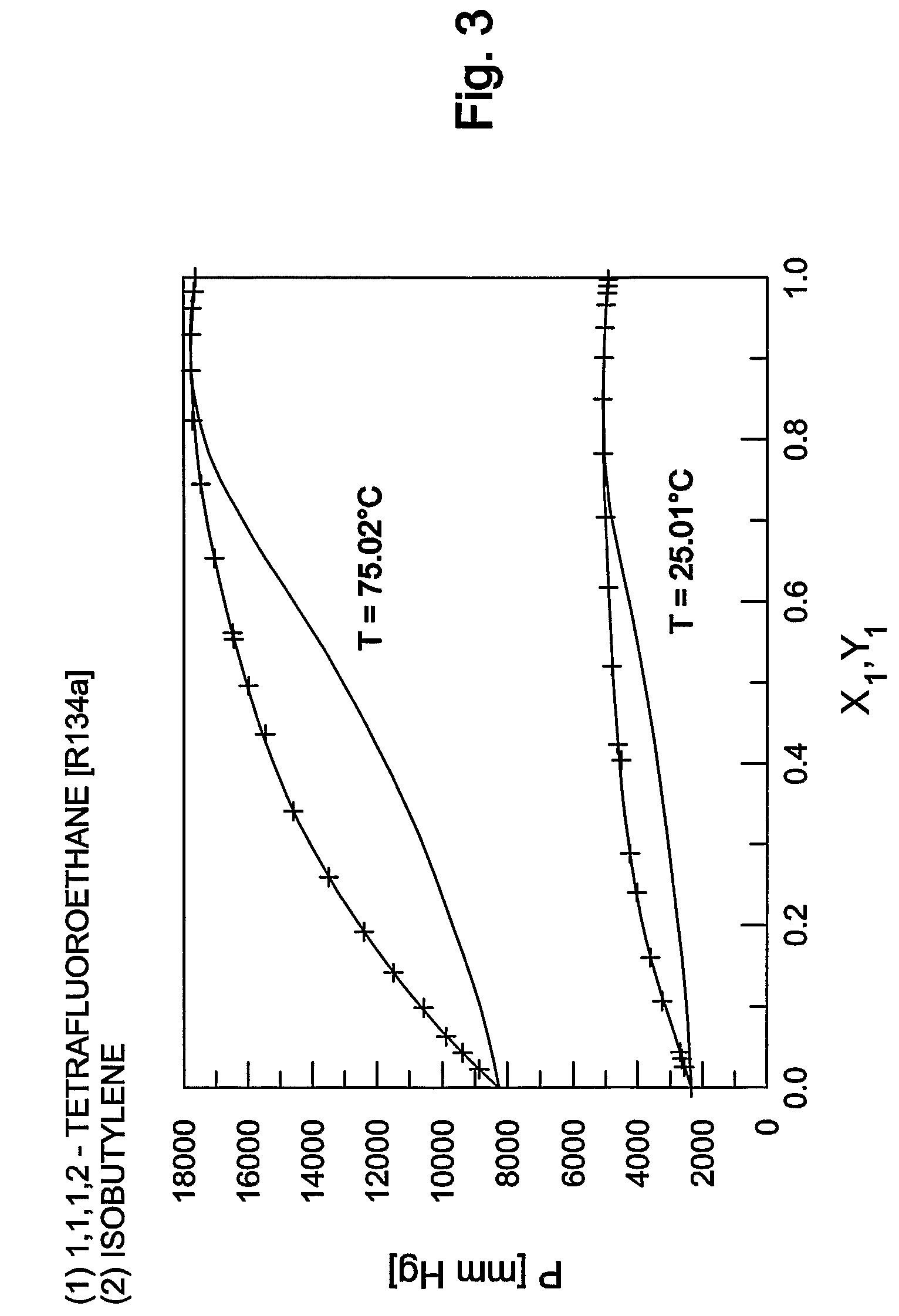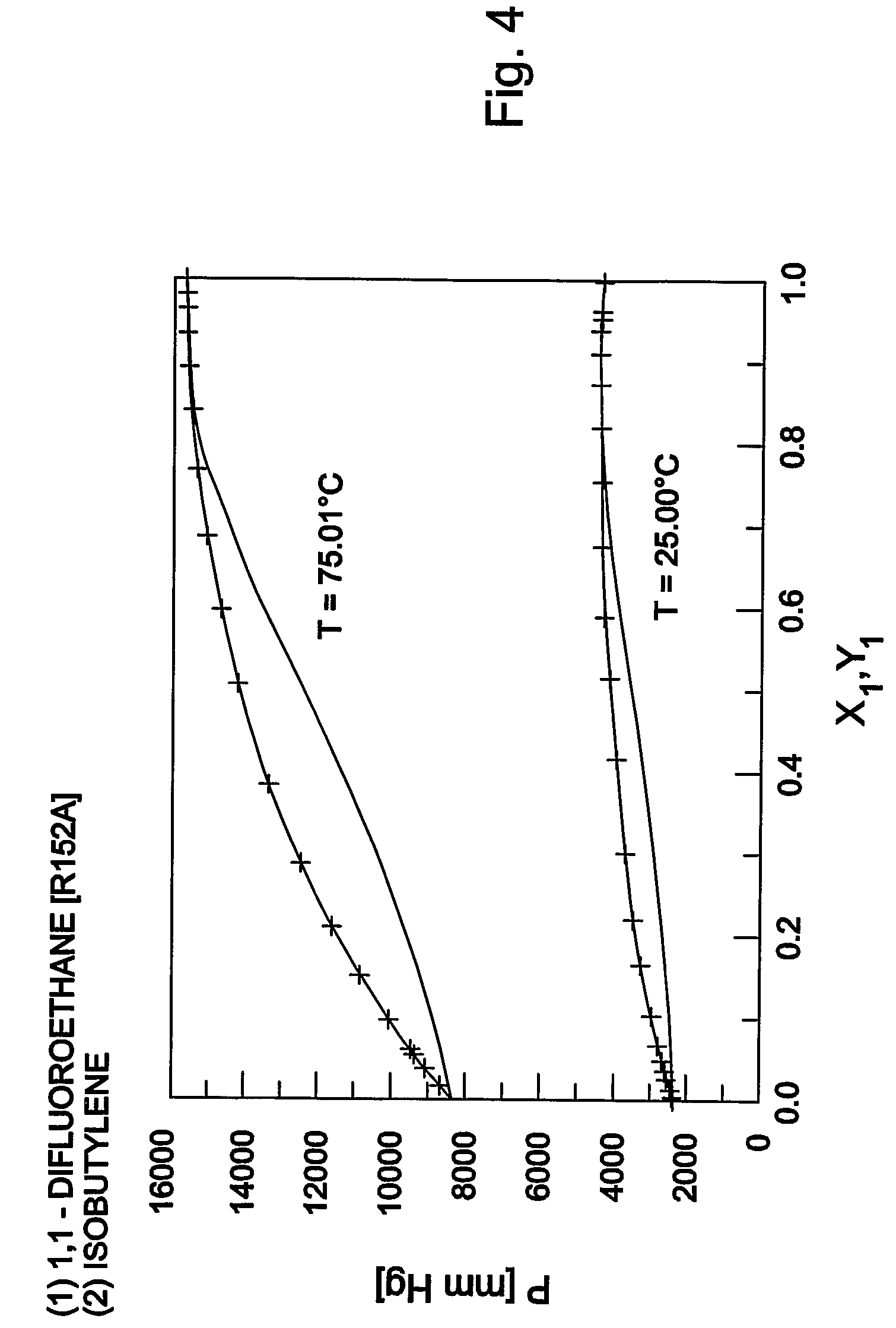Processes utilizing extractive distillation
a technology of extractive distillation and process, which is applied in the field of extractive distillation processing, can solve the problems of limiting the practical concentration of slurry used in most reactors, the mechanistically complex polymerization of isobutylene and its copolymerization with comonomers like isoprene, and the rise of the slurry temperatur
- Summary
- Abstract
- Description
- Claims
- Application Information
AI Technical Summary
Benefits of technology
Problems solved by technology
Method used
Image
Examples
examples
[0145]For the VLE measurements (isothermal P-x data) two different static devices were used as described below. However, any device suitable to demonstrate the following principles may be used. In this procedure, the pressure of different overall compositions is measured at constant temperature. The first apparatus can be operated at temperatures between 200 K and 500 K and pressures up to 20 MPa. This apparatus has to be operated manually. The second apparatus is operated by a computer and can be used at temperatures between 278 K and 420 K and pressures up to 2 MPa.
[0146]The thermostatted, purified, and degassed compounds (liquids or liquefied gases) are charged into a VLE cell which is evacuated and placed in a thermostatted oil bath. The pressure inside the cell is monitored with a pressure sensor (model PDCR 4010, Druck: range: 0 to 0.35 and 3.5 MPa for the manual set-up and model TJE-CP-1g, Sensotec: range 0 to 2 MPa for the computer-controlled set-up). The pressure sensors we...
PUM
| Property | Measurement | Unit |
|---|---|---|
| temperatures | aaaaa | aaaaa |
| volume | aaaaa | aaaaa |
| temperatures | aaaaa | aaaaa |
Abstract
Description
Claims
Application Information
 Login to View More
Login to View More - R&D
- Intellectual Property
- Life Sciences
- Materials
- Tech Scout
- Unparalleled Data Quality
- Higher Quality Content
- 60% Fewer Hallucinations
Browse by: Latest US Patents, China's latest patents, Technical Efficacy Thesaurus, Application Domain, Technology Topic, Popular Technical Reports.
© 2025 PatSnap. All rights reserved.Legal|Privacy policy|Modern Slavery Act Transparency Statement|Sitemap|About US| Contact US: help@patsnap.com



